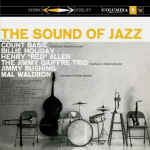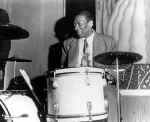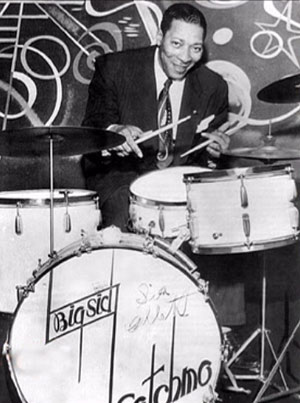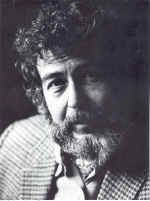JAZZ CRITIC
Whitney Lyon Balliett
April 17, 1926 - February 1, 2007 - Manhattan
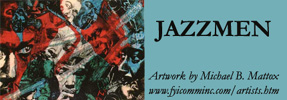



Jazz Reporter
Known for Poetic Prose
By Adam Bernstein
Washington Post Staff Writer
Friday, February 2, 2007; B07
Whitney Balliett, 80, a jazz reporter who spent more than four decades
writing thousands of graceful and definitive stories for the New Yorker
magazine and helped create one of the finest jazz programs on
television, died February 1, at his home in Manhattan, N.Y. He had liver
cancer.
Jazz critic and poet Philip Larkin described Mr. Balliett as "a
writer who brings jazz journalism to the verge of poetry." Dan
Morgenstern, director of the Institute of Jazz Studies at Rutgers
University, called him "the greatest prose stylist to ever apply
his writing skills to jazz."
Mr. Balliett began writing a regular jazz column for the New Yorker in
1957. To convey the essence of music and musicians, he avoided technical
terms. He considered himself an "impressionist" when he wrote
about musicians because music itself is fleeting, so "transparent
and bodiless." Jazz in particular, he wrote, had "odd
non-notes and strange tones and timbres."
In his observations, he created portraits of entertainers in action. As
an amateur drummer, he had a particular appreciation for skilled
drummers.
Writing of one of his idols, the drummer Sidney
"Big Sid" Catlett, he said, "One was transfixed by
the easy motion of his arms, the pulse-like rigidity of his body, and
the soaring of his huge hands, which reduced the drumsticks to
pencils."
One of Mr. Balliett's most-anthologized pieces was his 1962 profile of
clarinetist Pee Wee Russell, titled "Even His Feet Look Sad."
As for Russell's music, Mr. Balliett wrote: "No jazz musician has
ever played with the same daring and nakedness and intuition. His solos
didn't always arrive at their original destination. He took wild
improvisational chances and when he found himself above the abyss, he
simply turned in another direction, invariably hitting firm ground.
"His singular tone was never at rest. . . . Above all, he sounded
cranky and querulous, but that was camouflage, for he was the most
plaintive and lyrical of players."
Whitney Lyon Balliett, the son of a businessman, was born April 17,
1926, in Manhattan. While attending the private Phillips Exeter Academy
in New Hampshire, he began what he called his "erratic noncareer as
a drummer" after hearing a jam session on a Sunday afternoon at
Jimmy Ryan's club on New York's West Side.
"The famous old New Orleans drummer Zutty Singleton was
hypnotic," he later wrote of the experience for the Atlantic
Monthly. "He moved his head to the rhythm in peculiar ducking
motions, shot his hands at his cymbals as if he were shooting his cuffs,
hit stunning rim shots, and made fearsome, inscrutable faces, his
eyelids flickering like heat lightning."
After graduating from Cornell University in 1951, he wrote about jazz
for the Saturday Review while working as a proofreader for the New
Yorker. William Shawn, an admirer of jazz pianist Fats Waller, gave the
young staff writer a jazz column in 1957.
The same year, he and jazz critic Nat Hentoff helped create the CBS-TV
program "The
Sound of Jazz," an offshoot of the series "The Seven
Lively Arts."
The jazz show, hosted by New York Herald Tribune columnist John Crosby,
brought to millions of homes such eclectic performers as Billie Holiday,
Count Basie, Gerry Mulligan and Thelonious Monk. The program also
twinned unlikely pairings of musicians, such as Russell and Jimmy
Giuffre, clarinetists of two very different generations and styles.
Eric Larrabee wrote in Harper's magazine that "The Sound of
Jazz" was the "best thing that ever happened to
television." Columbia Records produced an album of the show's
performers, and a video of the program was released in the mid-1980s.
Jazz critic John S. Wilson, writing in the New York Times in 1985, said
that "putting Monk on national television at a time when, to the
extent the general public knew of him at all, he was apt to be
considered weird and possibly menacing, was a courageous and positive
act."
Mr. Balliett contributed short articles for the New Yorker's Talk of the
Town section as well as book, film and theater reviews. He also wrote
poetry. He left the magazine staff in 1998.
Collections of his New Yorker writings were published frequently over
the years. His books included "American Singers" and
"American Musicians." One massive volume, subtitled "a
Journal of Jazz," came out in 2000.
Reviewers noted that Mr. Balliett's taste was more traditional than
avant-garde, and he tended to overlook more contemporary players, but he
liked to approach all music with a degree of curiosity. He also had a
reputation for writing sympathetically about his subjects, often letting
them speak for paragraphs at a time to convey their rhythm and
personality.
"You have to look at it from the musicians' point of view," he
told the Times of London in 1993. "Often they don't get paid more
than the union minimum or they've been on the road. I once traveled with
Duke Ellington's orchestra, for about five days, and I couldn't believe
it. Jesus! You don't know where you are, you have no sense of time or
place, you can't sleep right. How these guys do it for so long, I don't
know."
His marriage to Elizabeth King Balliett ended in divorce.
Survivors include his wife of 41 years, landscape painter Nancy Kraemer
Balliett of Manhattan; three children from his first marriage, Julie
Rose of Accord, N.Y., Blue Balliett of Chicago and Will Balliett of
Manhattan; two sons from his second marriage, Whitney L. Balliett Jr. of
Natick, Mass., and Jamie Balliett of Erie, Colo.; a brother; a
half-sister; and seven grandchildren.

Photo from
Big Sid Catlett
Pee Wee Russell
Nat Hentoff
LINKS

